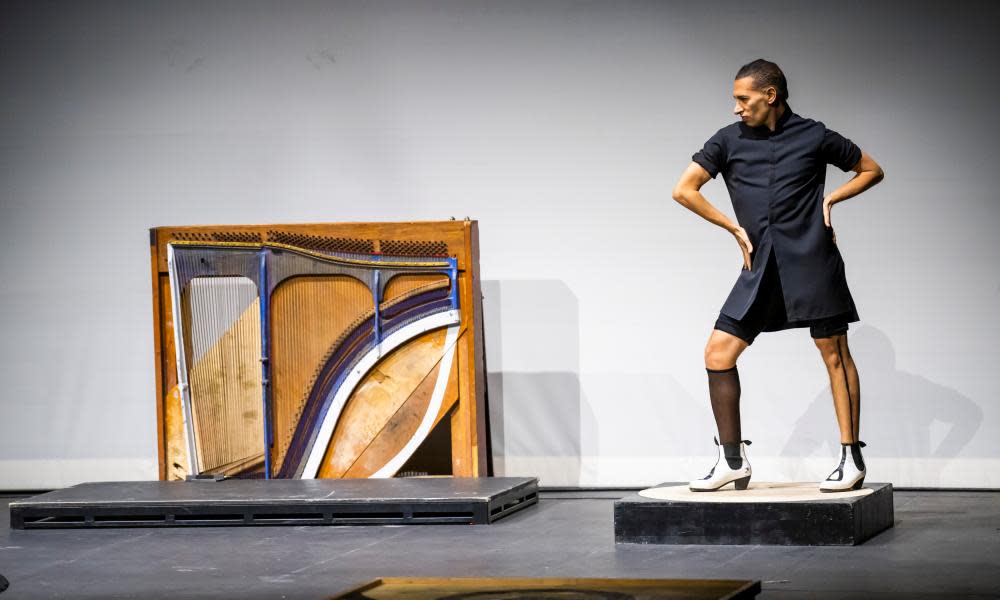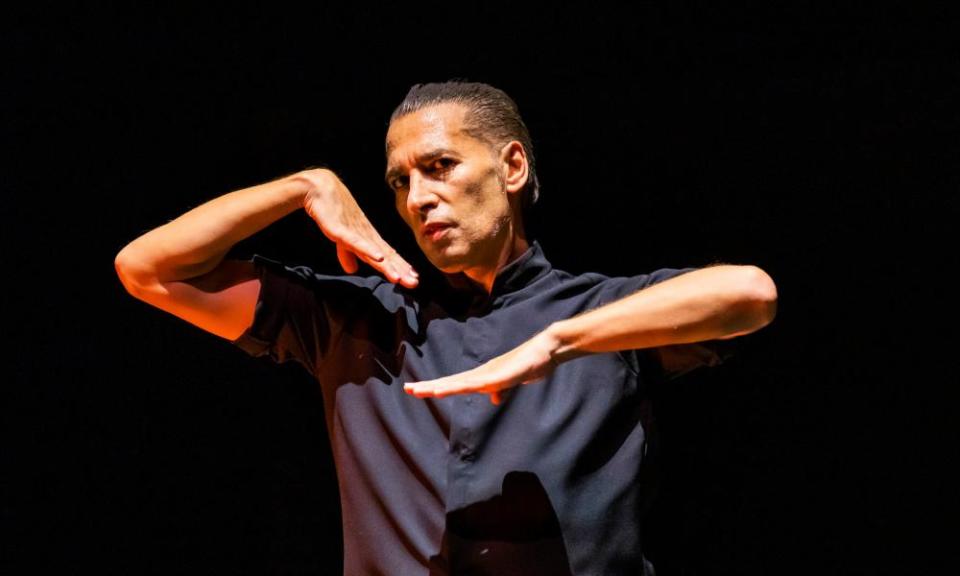Israel Galván: La Consagración de la Primavera review – Stravinsky with a flamenco stamp

In 1913, The Rite of Spring broke the mould of tradition, in both music and dance. Stravinsky’s incendiary score is a flame that has lured many choreographers, though few have withstood its force. Pina Bausch was one, with her maximalist 1975 version, all massed bodies, earth and obsession. Now Israel Galván is another, though his approach is elementally austere: a lone dancer, stark lighting, the orchestra score reduced to a two-piano transcription (terrifically played by Daria van den Bercken and Gerard Bouwhuis). The stage is scattered with bare boards, miked for sound, the uncased frame of an upright piano stands bereft at the back.
Where Nijinsky broke open ballet, Galván breaks open flamenco. In direct homage to Nijinsky, he enters with flat, frieze-like steps, to an improvised piano prelude of impressionist sonorities which precede the ominous arrival of Stravinsky’s music. You can see the flamenco lineage in the sharp direction of arms and head, the downward drive of the feet, the finger snaps and body slaps, whipped spins and held stillness. But all phrasing, all flow and finish, has been expunged. These are fragments of a style, exposed as the moving parts of its mechanism and set in motion by the gears, cogs and hinges of the human body – just like the music being hammered through the wood and wires of the pianos, never settling into a form or rhythm.

Galván costumes himself in similarly make-do mismatches: nondescript tunic, ostentatious ankle boots, one stockinged calf, loose shorts; later, a billowing curtain of a skirt. He grimaces theatrically. He mouths words. Who knows if they mean anything. Underscoring everything comes the unnerving rattle, thunder and scrape of Galván’s amped, loose-cannon footwork. The stage becomes both mechanical soundbox and cultural echo chamber, in which you recognise everything but can count on nothing. It’s an exercise in anxiety.
After Stravinsky, where can Galván go? He sets his unhinged style against pre- and post-classical keyboard works (a sonata by Domenico Scarlatti, Frederic Rzewski’s formidable Winnsboro Cotton Mill Blues), and ends on more familiar ground with a coda of Spanish sevillanas – pointedly sandwiching himself between the two pianos. For all their fascination, these feel like add-ons to Galván’s primary achievement: placing his own indelible stamp on Stravinsky’s monumental score.

 Yahoo Movies
Yahoo Movies 
